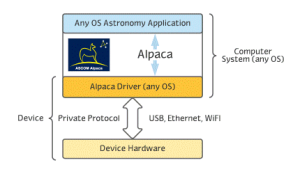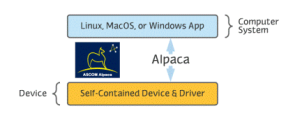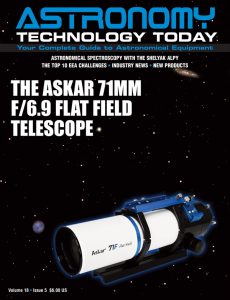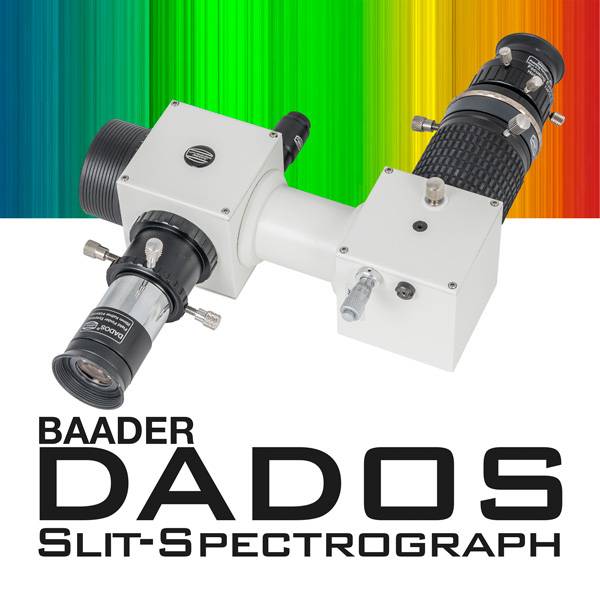The ASCOM Initiative was created to provide a compatible universal interface, which runs on any system including embedded processors. The ASCOM Initiative is 100% volunteer based and provides technology and support pro bono. The organization has released its latest major update, ASCOM Version 7.0

As the team notes about the release, “This release focuses on implementing the asynchronous interface changes agreed upon in 2023. Use of asynchronous programming techniques improves the end user experience by ensuring that user interfaces remain responsive while long-running operations are underway and that Alpaca network connections do not time out. Their use also speeds up tasks by enabling operations to be run concurrently rather than serially.”
ASCOM is the general name for enabling technology based on universal connectivity between astronomy apps/programs and the devices they use. ASCOM has opened up astronomy software innovation by eliminating the need to write special code for each device. ASCOM itself represents the definitions or patterns which are called Interfaces. These establish the universal language used between apps and devices.
ASCOM COM is the classic ASCOM which uses the COM service on Windows to provide communication between apps and devices. ASCOM Alpaca is the newer ASCOM which uses network communication between apps and devices. Alpaca works on Linux, MacOS, Windows, and even on embedded controllers. ASCOM COM is limited to Windows.
The ASCOM Initiative offers a modern standard that offers functionality that is being adopted by a number of companies within the amateur astronomy industry. ASCOM provides communication between astronomy programs and astronomy devices on multiple operating systems like iOS, Linux, Android, and Mac, using the Internet (which means Wi-Fi-connected mobile devices and also astronomy instruments connected via Wi-Fi). It also provides transparent communications with existing unmodified devices, drivers and programs on Windows. ASCOM can be integrated into devices including mounts, cameras, dome & roof controllers, weather sensors, focusers, and filter wheels.

Since ASCOM can be built into a device, the device itself speaks a universal protocol that can be directly understood by any program. Everything needed is part of the device. This eliminates the need for additional drivers and support platforms.
As the team notes about Alpaca, “Your current Windows-hosted astronomy programs now have an “on-ramp” enabling them to use Alpaca devices. The ASCOM Chooser can automatically discover Alpaca devices and provide the connection enabling your apps to use them, all without requiring any change to your programs. 100% Compatible. And Windows ASCOM devices now have an “on-ramp” to Alpaca ASCOM Remote, a simple Windows app, turns your Windows ASCOM devices into Alpaca devices that can be controlled from a separate PC via your local net or by programs like SkySafari 7 and Cartes du Ciel.”
The two diagrams offered in Images 1 and 2 show the most common connectivity patterns when using Alpaca. In Image 1, the astronomy app includes the Alpaca network protocol, as does the adapter/driver. The “network” in this case connects two programs running on the same box but still using TCP/IP and other common layers. Both reside on the same physical computer, similar to how apps and devices relate on Windows systems with COM, but here we may be on a box running any OS.
In Image 2, the astronomy app also includes the Alpaca network protocol, but the driver is within a self-contained device. An example would be a mount with embedded Raspberry Pi controlling the motors and the hand box, but also including a tiny server that provides Alpaca access.
The ASCOM Alpaca Initiative provides the path for:
– Astronomy programs and devices to be connected across Windows, Linux, and Mac OS.
– Observatory systems to include programs and devices on multiple platforms.
– Devices that can operate via Wi-Fi or Ethernet and avoid the problems with USB.
– Interoperability between astronomy programs and devices running under different operating systems.
– Implementation of astronomy programs and device control logic written in different languages on different operating systems.
– Current unmodified Windows astronomy programs to use ASCOM compatible devices connected to any networked PC or other platform via Alpaca, or a self-contained Alpaca device.
– Current unmodified Windows-resident devices (mounts, focusers, etc.) to be used by astronomy programs running on networked PCs, Macs, and mobile devices that use Alpaca for device communications.
You can learn more about the ASCOM Initiative here.
 And to make it easier for you to get the most extensive news, articles and reviews that are only available in the magazine pages of Astronomy Technology Today, we are offering a 1-year magazine subscription for only $6! Or, for an even better deal, we are offering 2 years for only $9. Click here to get these deals which only will be available for a very limited time. You can also check out a free sample issue here.
And to make it easier for you to get the most extensive news, articles and reviews that are only available in the magazine pages of Astronomy Technology Today, we are offering a 1-year magazine subscription for only $6! Or, for an even better deal, we are offering 2 years for only $9. Click here to get these deals which only will be available for a very limited time. You can also check out a free sample issue here.



